From time to time ICBM missiles are randomly removed from their silos
and sent to Vandenberg AFB, California, for a test launch. The
purpose is to ensure that those missiles will indeed launch in a real
world emergency if required to do so. Photos show a
Minuteman II ICBM being removed from its silo at Whiteman AFB,
Missouri, most likely for a test launch at Vandenberg (Whiteman is no
longer a missile base, but instead is home for the Air Force's B2
stealth bomber, Spirit.)
In 1971, my
deputy, 2nd Lieutenant Jerry Vanlear, and I launched one such ICBM at
Vandenberg AFB,California. However, it was not the usual Minuteman
Missile. Of the 1000 Minuteman missiles at that time, Six ERCS
(Emergency Rocket Communication System) ICBMs were located at Whiteman
AFB, Missouri where Jerry and I were stationed. Rather than
warheads, these ERCS missiles were topped with radio
transmitters. In case of war, ERCS crews on duty would record the
go-to-war message from SAC (Strategic Air Command) headquarters onto
two of the ERCS missiles which were then launched east over the
Atlantic and west over the Pacific. During an atomic war, many
forms of communication would likely be interrupted. The ERCS
missiles were intended to ensure that our ships at sea, especially
submarines armed with nuclear missile, received the launch message in a
timely manner.
At Vandenberg, we
recorded a test message and then launched an ICBM out over the
Pacific. A minute or so later we heard my voice over the launch
center radio transmitting the message I had recorded.
A rather humorous
event occurred during one of our practices at Vandenberg. During
many military drills of various sorts, commands are often preceded by
an announcement that it is a drill rather than the real thing. During
one practice, a high-ranking officer became freaked-out because our
practice command to launch the ICBM had not been preceded by a drill
announcement. "You didn't tell them it was a drill, you didn't
tell them it was a drill! he shouted" Of course, as everyone else knew,
the missile was under maintenance and was not capable of being launched
at that time. I expect it took him quite a while to live that
down.
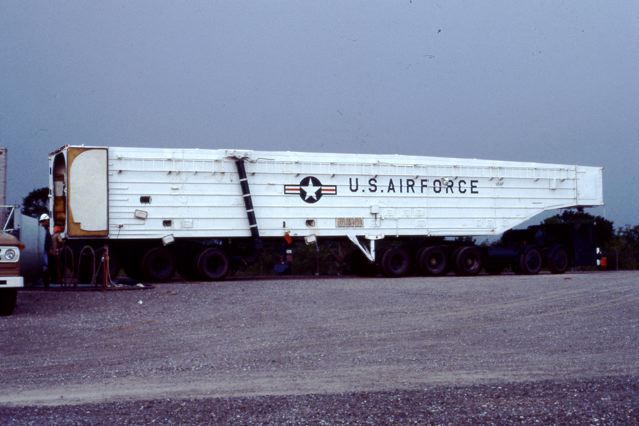
Missile transporter-erector used to remove/replace missiles and to transport them.

Personnel entrance to underground missile silo.
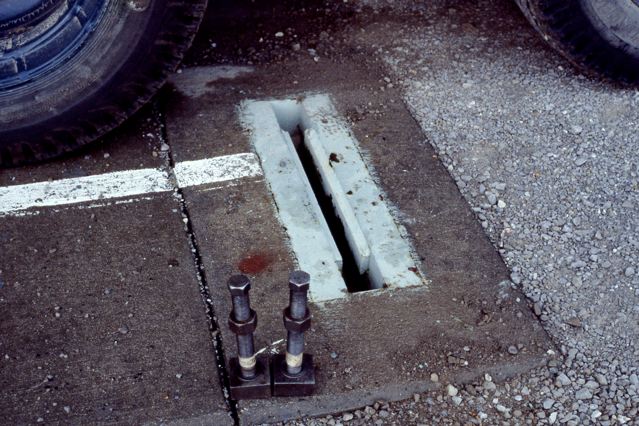
Attachment point for transporter-erector hydraulic jacks.

Base of hydraulic jacks in place.
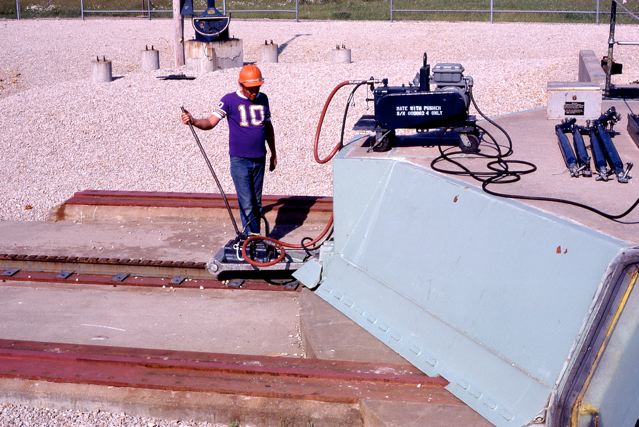
Silo cover being opened with hydraulic equipment. The cover is about three feet thick of reinforced concrete
and is designed to survive anything other than a direct hit by a nuclear weapon. In an actual launch powerful
explosives would hurl the 100 ton plus cover along its tracks and away from the silo.
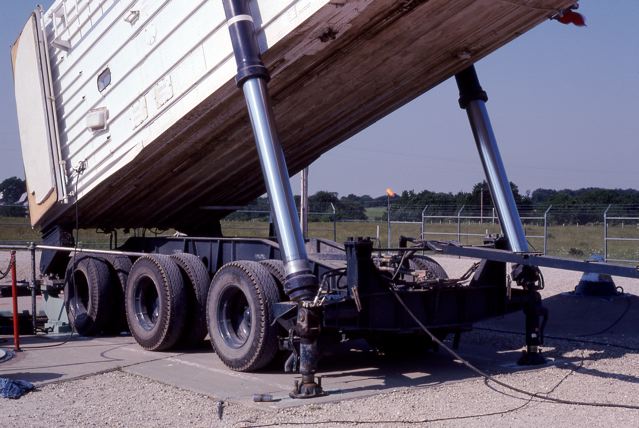
Transporter-erector in process of being raised to a ninety degree angle.
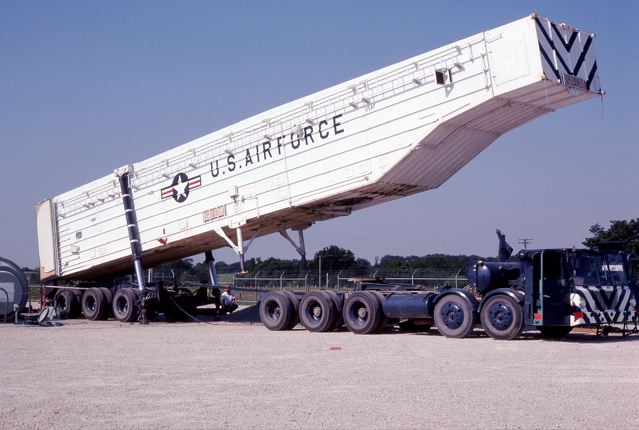
Transporter-erector is hinged at rear to allow cargo portion to tip upwards.

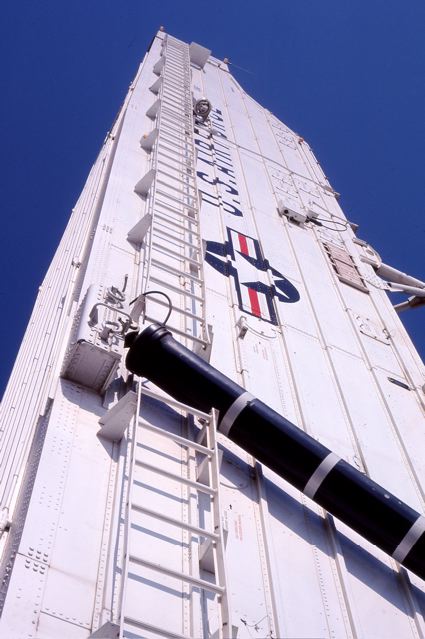
Cover being removed as transporter-erector elevates over
silo.
Transporter-erector fully in place over silo.
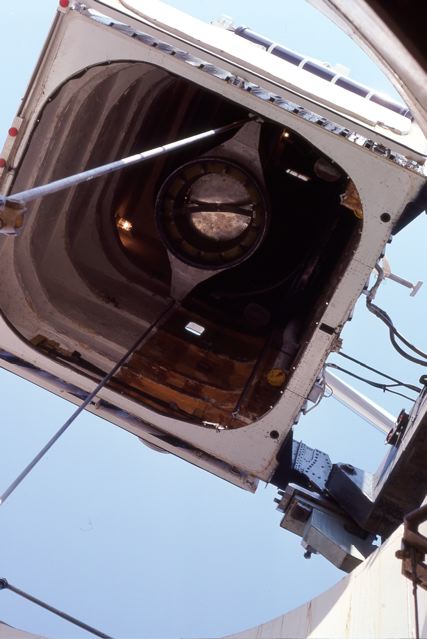
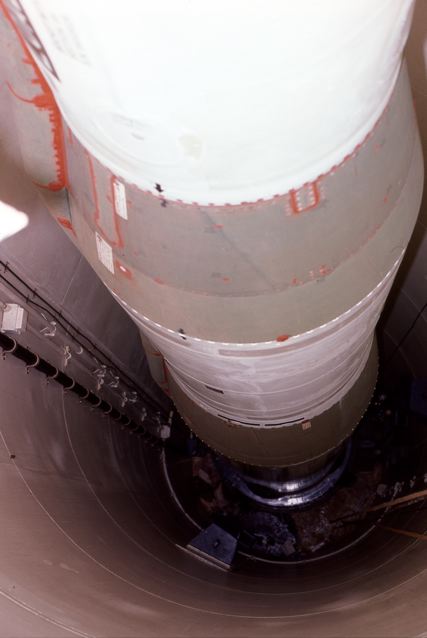
Transporter-erector
lift
mechanism.
Missile to be removed (warhead previously removed).
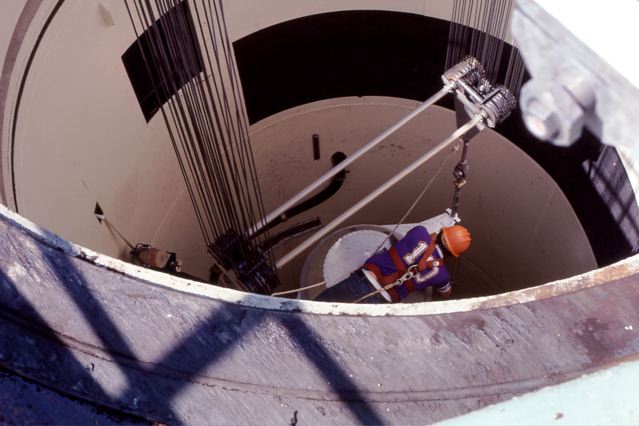
Worker attaching lift mechanism to missile.

Note safety harness attached to worker. It's a long drop to the bottom of the silo (about 80 feet).
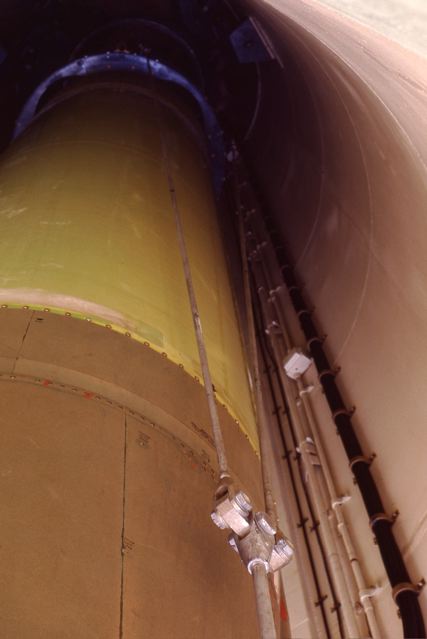
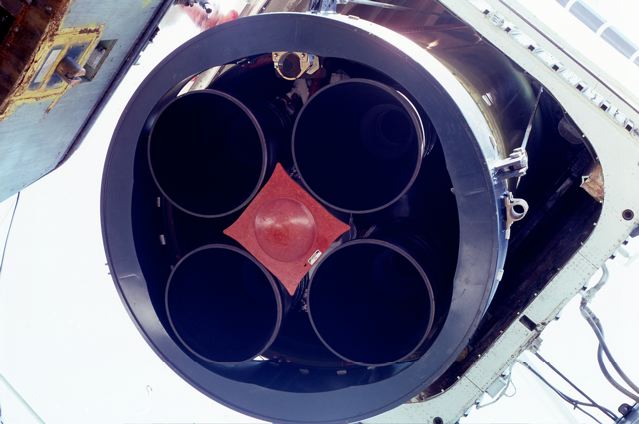
Lift mechanism in
place.
Missile being lifted into the transporter-erector.
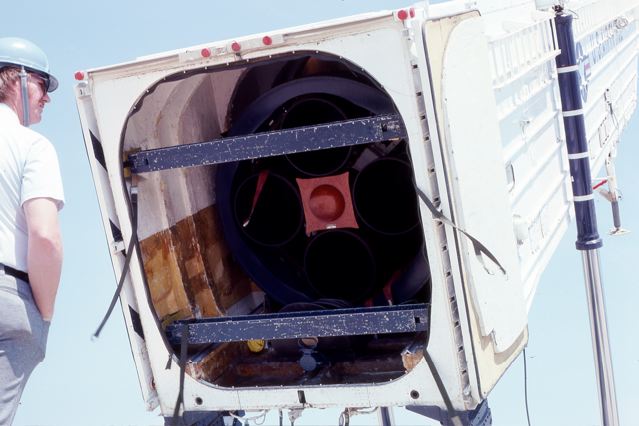
Missile fully into transporter-erector and locked in place.
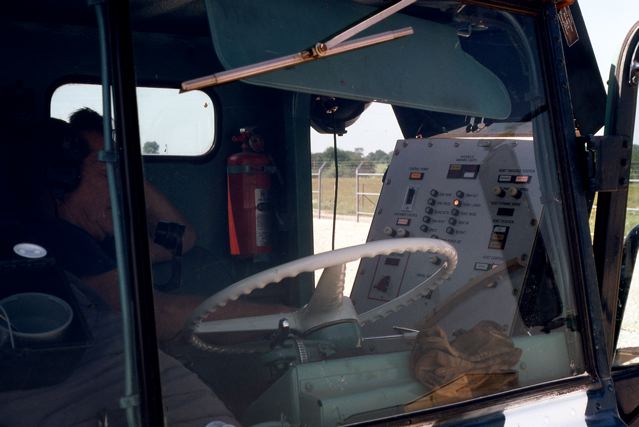
Cab of transporter-erector.
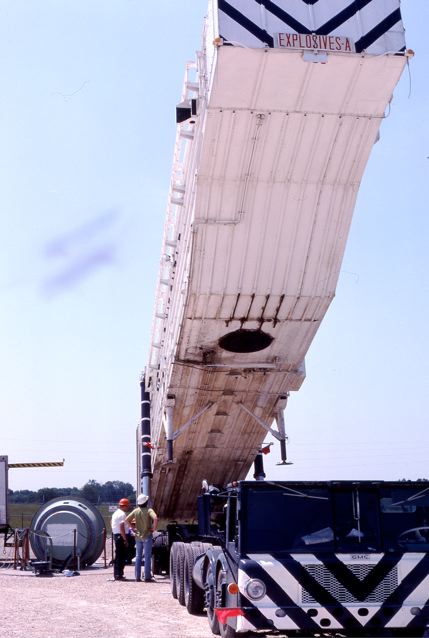
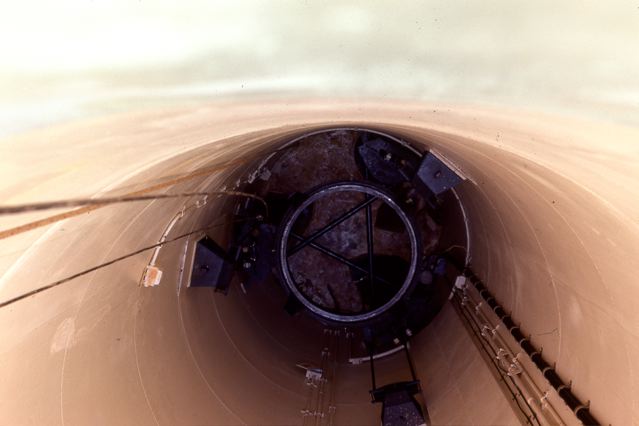
Cargo portion of transporter-erector being
lowered.
Bottom of empty missile silo.


















